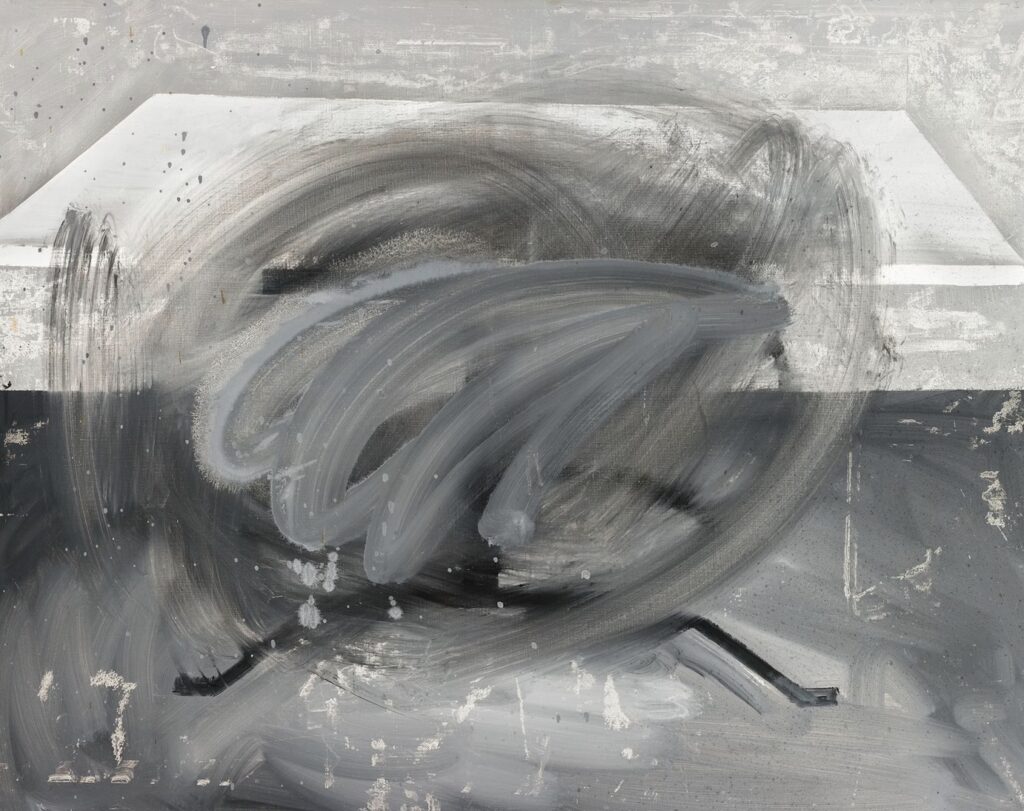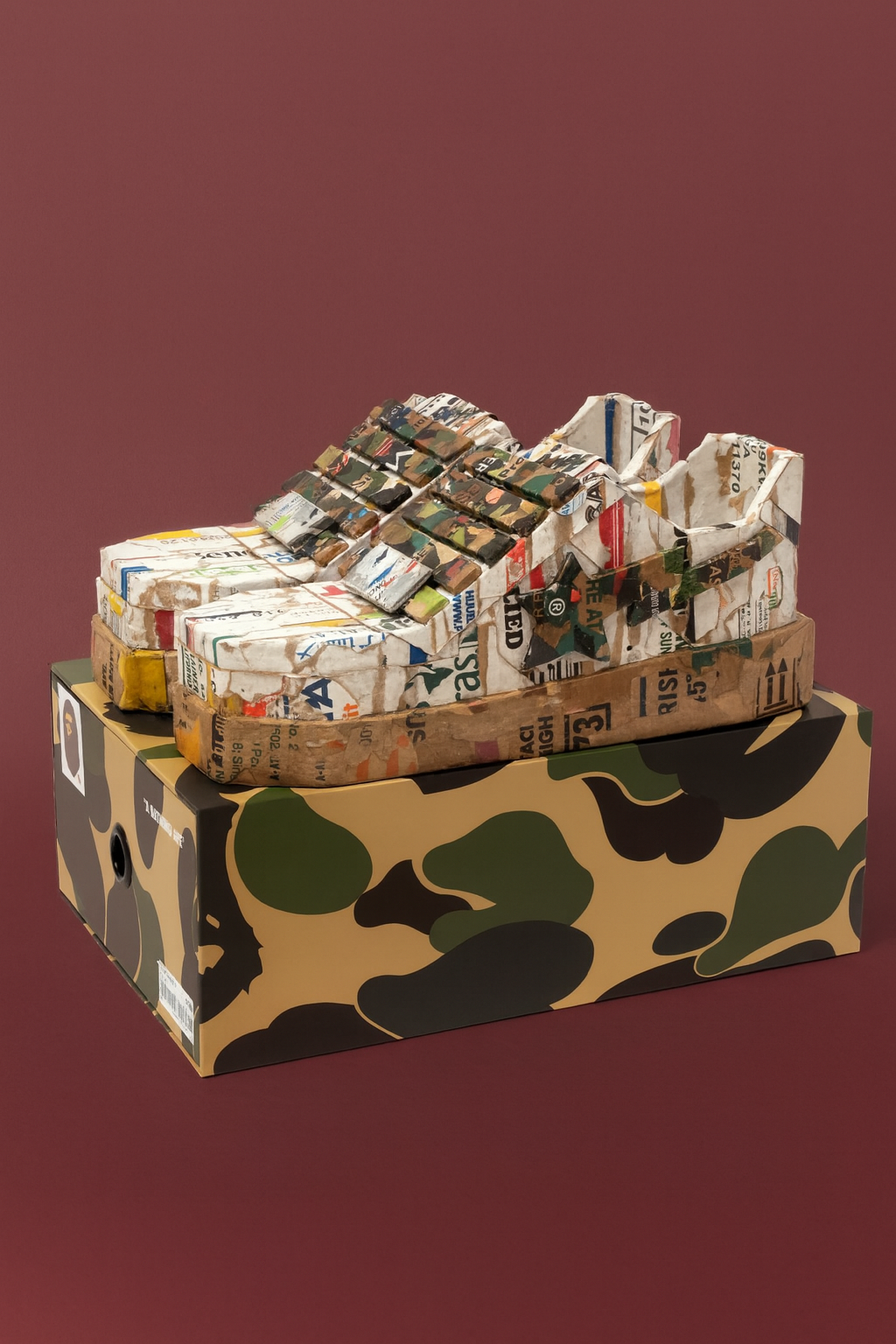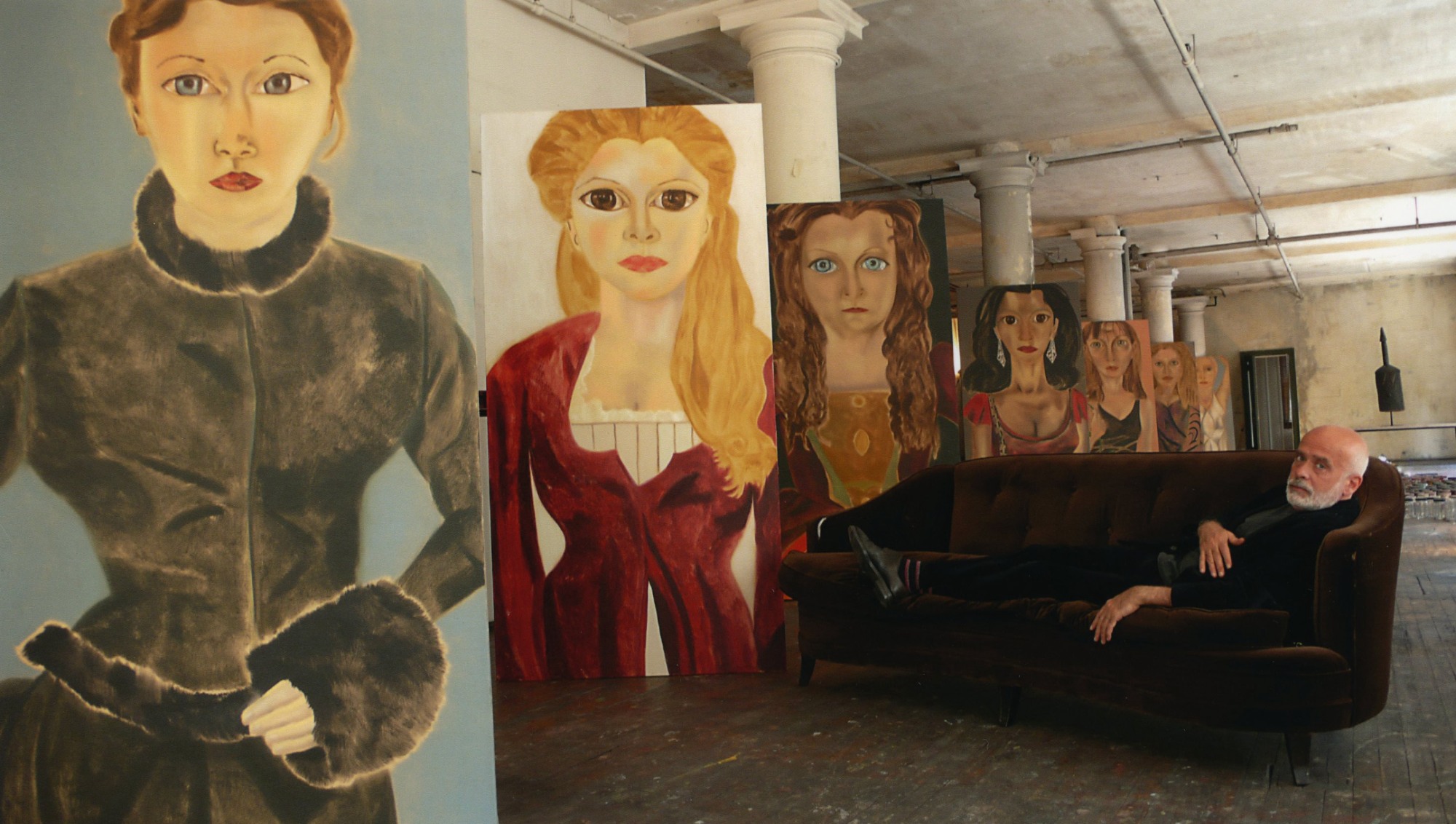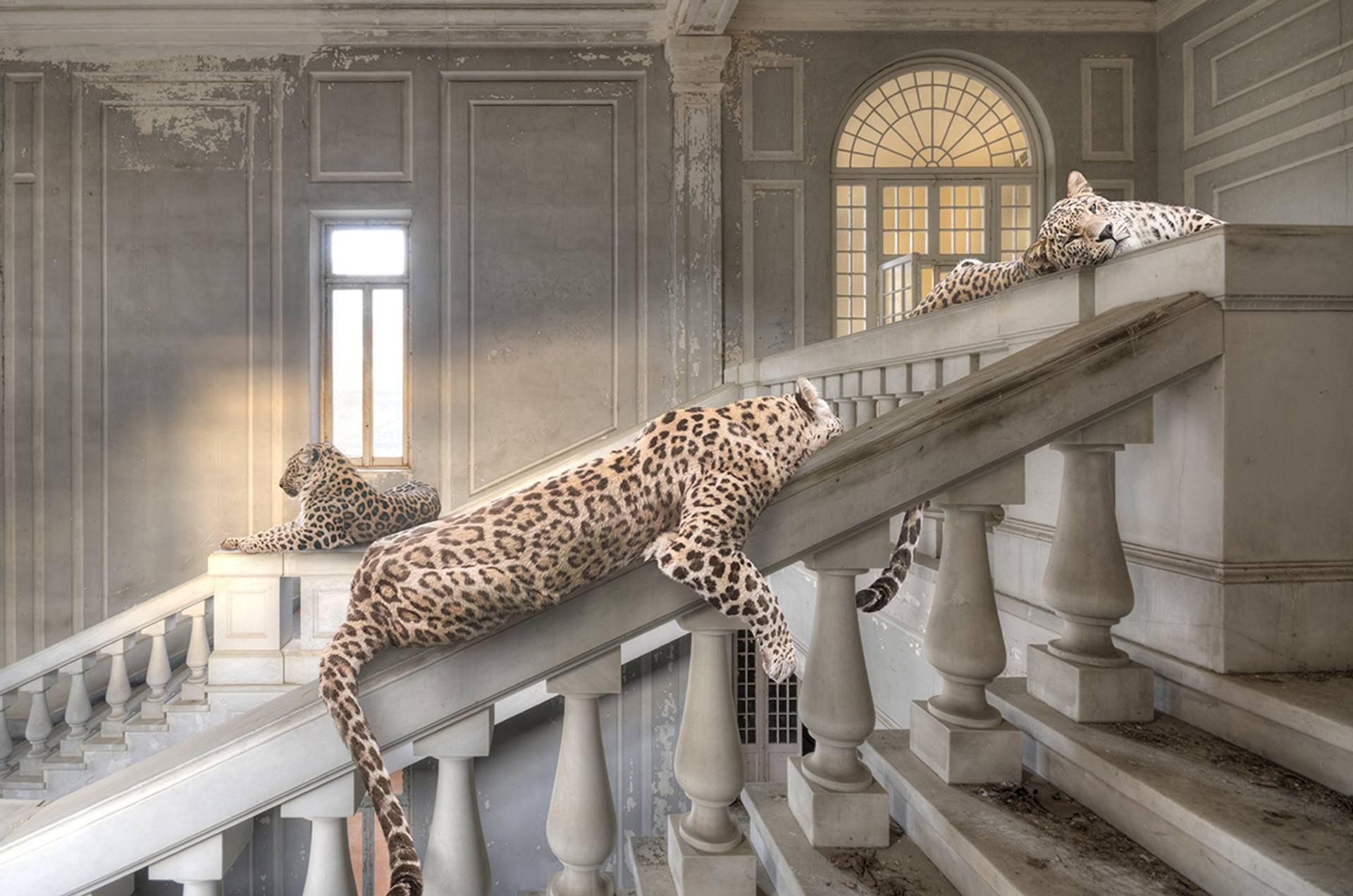gerhard richter’s tisch (1962): the beginning of uncertainty
Before Kerze, before the abstractions and squeegee swaths of color, there was a table — a simple, ordinary piece of furniture that became the genesis of modern painting’s most persistent questions. In 1962, shortly after escaping East Germany for Düsseldorf, Gerhard Richter painted Tisch (Table), an oil on canvas that would later be catalogued as his first official work (Catalogue Raisonné 1).
At first glance, Tisch is almost banal — a photorealistic rendering of a table with a book or paper lying upon it. But the surface is not clean. Richter smeared and erased the image while it was still wet, introducing the blurry veil that would become his signature gesture. What remains is neither painting nor photograph, neither presence nor absence, but a question posed in oil: What does it mean to see truth after ideology?
the table as origin story
The table was not chosen for symbolism but for its ordinariness. Richter found the source image in a popular magazine — a black-and-white advertising photograph that embodied the mechanical clarity of the new consumer age. By translating this image into paint, he sought to test either a painting could still mean anything in a world flooded with images.
Having fled a country where art was a tool of propaganda, Richter arrived in the West to find a culture governed by advertising and television. Both systems, he realized, produced their own versions of truth. In Tisch, he scraped away that truth literally — using a rag or brush to smudge the image into ambiguity. The gesture was an act of rebellion, but also of purification.
Richter would later remark: “I began to paint from photographs because I wanted to be free from all that was supposed to be art.” Tisch embodies that freedom — the moment when painting became not a declaration of belief but an arena of doubt.
between east and west: a divided gaze
Painted shortly after Richter enrolled at the Kunstakademie Düsseldorf, Tisch bridges the aesthetics of two worlds. From East Germany, he brought a discipline rooted in Socialist Realism — a faith in clarity, labor, and didactic purpose. From the West, he absorbed the provocations of Pop Art and Fluxus, which mocked those very certainties.
In Tisch, these forces collide. The table — a site of domestic stability — is rendered with almost Soviet seriousness, then immediately obliterated. The blur functions as a kind of visual censorship: the artist as both creator and redactor. The image remains, but its clarity is gone. Viewers sense that something has been removed, that knowledge has slipped away just as it came into focus.
This dialectic of revelation and erasure would define Richter’s entire career. From Tisch onward, his paintings refused to resolve into certainties. They exist in a state of perpetual questioning, where beauty and doubt become indistinguishable.
the birth of the blur
Richter’s blur was never merely aesthetic. It was a moral stance. In 1962, to paint something clearly was to claim knowledge — and for a German artist emerging from the shadows of fascism, such knowledge was suspect. The blur became a way to un-know, to distance oneself from the hubris of ideological clarity.
In Tisch, the smear appears like a gesture of forgetting. The paint drags across the tabletop, dissolving edges into ghostly light. The result is a surface that vibrates between presence and absence, truth and illusion. It is as though Richter had caught the moment memory turns into dream.
Decades later, this technique would resurface in his portraits, landscapes, and history paintings — from the 1965 Aunt Marianne to the 1988 October 18, 1977 cycle. But Tisch remains the point of origin, the first time Richter used the blur not as decoration but as language.
material
Viewed today, Tisch feels eerily modern. Its play between sharpness and smear anticipates digital image manipulation, where truth can be retouched out of existence. Yet the painting’s materiality — the thickness of oil, the pressure of gesture — anchors it in the physical world.
This tension between the real and the illusory makes Tisch so prophetic. It marks the beginning of Richter’s lifelong project: to test how painting might survive in an age of photography, and later, of screens. The painting insists that truth is not a matter of clarity but of consciousness — a recognition that seeing is always filtered through memory, ideology, and emotion.
within the 2025 fondation louis vuitton retrospective
At the Fondation Louis Vuitton in Paris, Tisch appears at the very entrance of the new retrospective, framing Richter’s six-decade career as a journey from image to abstraction and back again. Displayed alongside his early photographs and collages from Atlas, the painting serves as a manifesto in miniature.
Curators Dieter Schwarz and Nicholas Serota present it as the seed from which all subsequent Richters grew. The blurred table foreshadows the color fields of the 1980s, the glass panels of the 2000s, and even the digitally printed Strip Paintings of the 2010s. Every gesture in Richter’s oeuvre — every scrape, drag, and erasure — can be traced back to the moment he smudged that tabletop in 1962.
Visitors entering the retrospective see Tisch not as a small work but as a cosmological one — the big bang of Richter’s universe.
memory, erasure, and the artist’s hand
If Tisch asks what painting can do after photography, it also asks what the artist can do after history. By erasing his own image, Richter acknowledges the complicity of vision itself in the fabric of power. To blur is to confess.
And yet, there is tenderness in the gesture. The smear feels like a caress, as if Richter could not bear to look directly at what he was painting. That paradox — intimacy and distance coexisting — runs through all his later works. Even his vast abstractions retain the emotional charge of Tisch: a desire to touch reality while knowing it will disappear the moment you do.
impression
More than six decades later, Tisch remains a painting about beginnings — not just of a career but of a new form of seeing. It was the first time Richter translated a photograph into paint and then destroyed its truth in the same gesture. From that moment, painting could no longer claim innocence.
As the 2025 Paris retrospective shows, every Richter painting since has been a variation on Tisch — a negotiation between certainty and loss. The table itself may be ordinary, but the act that produced it was revolutionary. It transformed German painting from a vehicle of ideology into a mirror of skepticism.
In its blurred surface lies a truth that feels more urgent than ever: that the moment we see clearly, we stop seeing at all.
No comments yet.








